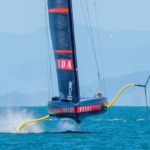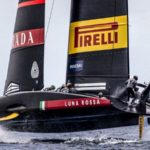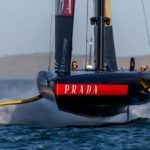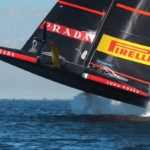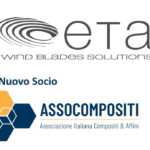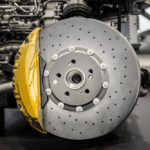The structural composites find in the nautical field a privileged field of application. The performance required for recreational or racing boats is developed with constantly evolving technical solutions such as foils – like those mounted on Luna Rossa – able to improve stability, maneuverability and comfort.
Over the past 20 years, average speeds have increased by about 30% worldwide, with maximum speeds increased by about 50%, while structures have become lighter. While the thrust for performance continues, the current foil is able to perform a great balance challenging the laws of physics and the thought of sailing on a racing boat.
The America’s Cup has certainly helped to develop tools and design processes that forecast the behavior of the boat and therefore the simulation of loads. In addition, the ability to predict the flight attitude of boats like Luna Rossa has been improved thanks to the work done in that specific competition.
The composite boat’s mast
Strength and stiffness are the most important characteristics for the masts of a sailing boat. Composite materials, and above all carbon fibers, can help significantly to achieving these technical results, able to meet the ever-increasing demands of the industry.
Sails with carbon fiber composite structure reveal competition-level performance. Machining and process technologies set new standards, with significantly reduced cycle times.
The rigid “wings” are clearly superior to the conventional ones, the so-called soft sails. In terms of strenght, a wing is much more efficient than a soft sail. Per square foot, a wing offers up to 1.7 times the power of soft sails with much lower drag and implementation force. This is because a soft sail requires a strong enough breeze to move the ship, and its movement in response to changes in wind loads dissipates power and causes aeroelastic collapse and endurance, slowing forward momentum.
 |
SUBSCRIBE NOW
|
Source: Plast Magazine



